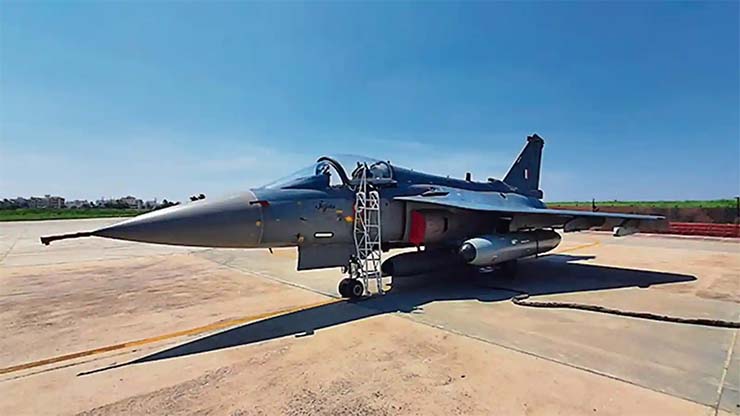
Bengaluru: Defence public sector undertaking Hindustan Aeronautics Limited (HAL) is preparing to activate new production lines for Tejas MK-1A and HTT-40 planes. The defence PSU has a capacity to build 16 Tejas MK-1As every year in Bengaluru, and the Nashik line will help the firm ramp up production to a total of 24 jets.
The new plant for the MK-1As will enable HAL to advance the deliveries of the 83 such fighters ordered by IAF for Rs 48,000 crore in February 2021 by at least a year, HAL chief CB Ananthakrishnan said. His comments came days after IAF chief Air Chief Marshal VR Chaudhari announced plans to order 97 more Tejas MK-1As at an estimated cost of Rs 67,000 crore.
HAL has a capacity to build 16 Tejas MK-1As every year in Bangalore, and the Nashik line will help the firm ramp up production to a total of 24 jets.
The first MK-1A will be delivered to IAF in February 2024, and the last of the 83 jets by 2028 (instead of 2029, the contracted delivery schedule), Ananthakrishnan said. Timely delivery is a top priority for IAF, which is grappling with a shortage of fighter squadrons.
“We are hoping to achieve a targeted minimum capacity of building 24 fighters. Nashik has been a big aircraft division that was earlier manufacturing Sukhoi-30s. Building eight Tejas MK-1As every year with an additional production line is not going to be a difficult job. This will help us make more fighters available to IAF at the earliest,” he said.
The aircraft manufacturing division at Nashik, set up in 1964, has produced MiG variants and Su-30s under licence. The new MK-1A production line is being set up fast to begin deliveries from Nashik.
“We have already started installing the jigs, fixtures and other equipment. We expect the first assembly to happen in December 2024. Our target is to deliver three aircraft from Nashik in 2024-25 and eight every year thereafter,” Ananthakrishnan said. The ancillary industry ecosystem in and around Nashik is good, and several micro, small and medium enterprises will be involved in Tejas MK-1As production, especially in supplying structural parts and components, he added.
If Tejas MK-1A production rate increases to 24, then the timelines will be met considerably, said former IAF chief Air Chief Marshal Fali Homi Major (Retd). “But it should be a constant effort to ensure that HAL maintains a 24-aircraft per year production rate. This will help IAF reach the desired force levels,” he said. IAF’s plans to go in for 97 more Tejas MK-1As reflected its confidence in the firm’s ability to fulfil orders within the stipulated timeline, he added.















